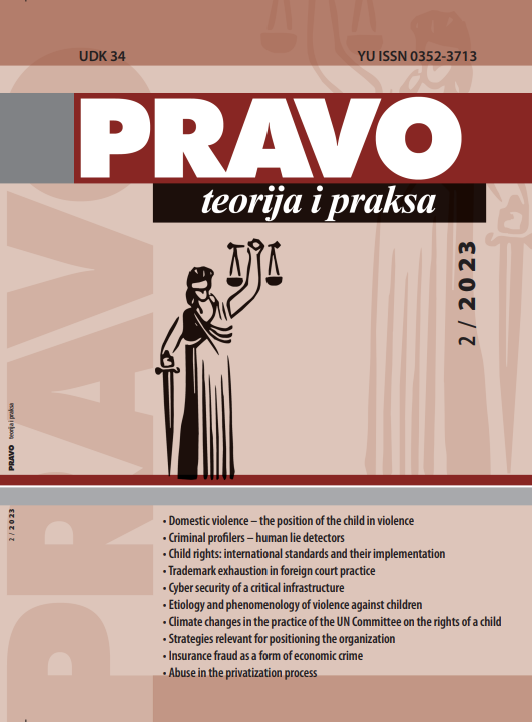CRIMINAL PROFILERS – HUMAN LIE DETECTORS
CRIMINAL PROFILERS – HUMAN LIE DETECTORS
Author(s): Željko Bjelajac, Aleksandar FilipovićSubject(s): Criminal Law
Published by: Pravni fakultet za privredu i pravosuđe u Novom Sadu
Keywords: criminal profiling; development of criminal behavior; risk factors; lie detection; crime prevention
Summary/Abstract: For a long time, people have demonstrated a natural tendency to analyze and assess fellow humans as well as animals, objects, and similar entities, even in everyday scenarios. However, it is a little bit strange that criminal profiling became integrated into standard investigative practices within law enforcement not before the 1980s. Criminal profilers primarily fulfill their role by working on the resolution of intricate crimes where the identity of the perpetrator is unknown. On the other hand, they also have a suppressive impact, and to a lesser degree, a preventive influence, which is enhanced by considering the risk factors associated with the emergence of criminal behavior, as well as the study of criminal phenomenology. The techniques employed in criminal profiling aid in the timely identification of symptoms that indicate a combination of biological, social, and environmental factors, including learning and situational elements. As we navigate through the factors contributing to the development of criminal behavior, as well as the suppression and prevention of crime through the efforts of criminal profilers, we reach the significance of their role in detecting deception and the essentiality of human presence and intervention in diverse formal conversations, encompassing law enforcement, social work, and education. The aim of this paper is to systematically shed light on the factors contributing to the development of criminal behavior, to investigate the phenomenology of crime and to highlight the role of criminal profilers in the prevention and suppression of crime, as well as to analyze their role in the process of lie detection, while giving recommendations for the incorporation of profiling techniques into the body of knowledge and skills of teachers, pedagogues, psychologists, social workers, and others. The methods used in this study include a quantitative and qualitative analysis, using primary and secondary sources, as well as a comparative analysis.
Journal: Pravo teorija i praksa
- Issue Year: 40/2023
- Issue No: 2
- Page Range: 17-33
- Page Count: 17
- Language: English

